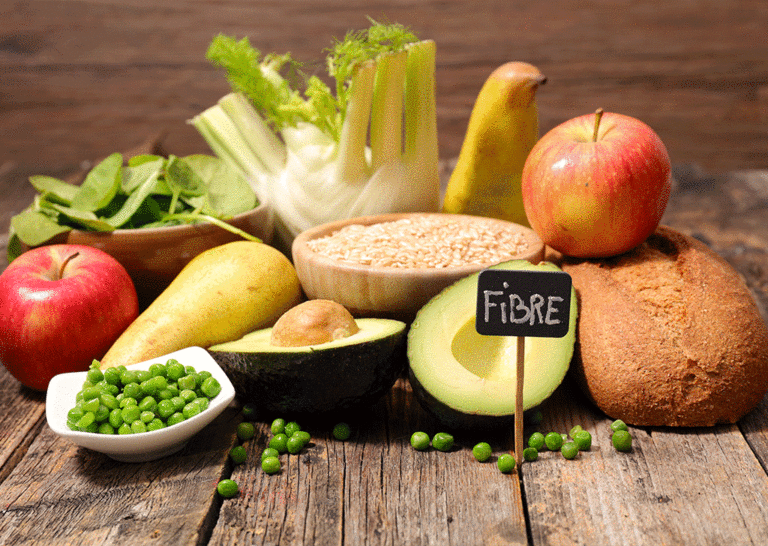From Everyday Health By Angela Lemond, RDN Eat more fiber. We’ve all heard this advice, so we assume it must be good for us. The problem is that fiber and flavor might seem like opposites — and for many of us, flavor is the typical driver of food choice. But the reality is that fiber can have flavor, along with medicinal effects to potentially help reduce and prevent common diseases. In this article, let’s take a look at exactly what fiber is and how it functions in the body.
What Is Fiber Exactly, and Generally, What Foods Contain This Carb?
Fiber is simply a type of carbohydrate found naturally in plant-based foods that is not digestible in humans.
Plant-based foods that are rich in fiber — such as fruits, vegetables, whole grains, beans and legumes, and nuts and seeds — also contain vitamins, minerals, and other powerful nutrients that the body can use for optimal health.
Although fiber cannot be digested, it is being moved down the digestive tract as nutrients are being digested, and can do some great things that positively impact our health.
The problem is that Americans are getting less than half of the daily intake recommendations of 14 grams (g) for every 1,000 calories of food.
A simpler recommendation level for most adults is between 25 and 38 g per day (1). In fact, fiber is listed as a “nutrient of concern” due to the low overall intake and known health benefits.
Soluble and Insoluble Fiber: What’s the Difference Between the Two?
There are two types of fiber: soluble and insoluble. While both are important, the two function differently in the body. Here’s how:
Soluble Fiber
Soluble fiber is a type of fiber that attracts water and forms a gel. This gel causes a slowing of the digestion process, which can be beneficial for weight loss. Foods high in soluble fiber include oats, legumes, edible plant skins, and nuts.
Insoluble Fiber
Insoluble fiber is the type of fiber that, you guessed it, repels water. You can find insoluble fiber in foods such as veggies, fruits, nuts and seeds, wheat bran, and whole-grain foods like whole-wheat pasta and brown rice. Its primary benefit is to provide bulk to stool and aid in the movement through the digestive tract.
Most diets have a combination of soluble and insoluble fiber, with 75 percent coming from insoluble fiber and 25 percent coming from soluble fiber.
Why Should I Eat Fiber? A Look at the Possible Health Benefits of the Carb
In short, fiber may actually help you live longer. Studies suggest folks who eat a higher intake of fiber tend to have lower rates of heart disease, obesity, type 2 diabetes, stroke, high blood pressure (hypertension), and digestive diseases.
You may help improve or prevent health conditions such as prediabetes, diabetes, high cholesterol, obesity, and various digestion problems, like constipation, colon cancer, and diverticulitis, by simply increasing fiber in your diet.
Weight Loss
Research suggests nutrients like fiber can play a major role in body weight. Normal-weight and overweight people have been found to have higher intake of dietary fiber than obese individuals. Other studies continue to suggest that high fiber intakes help reduce weight gain as you age.
Fiber expands and bulks food in your GI tract, slowing digestion. This can increase satisfaction of your food and helps stabilize blood sugar levels. Foods high in fiber also tend to be lower in energy density, meaning they’ll help you feel fuller without consuming excessive calories. This concept is at the core of why a higher fiber diet is associated with a lower rate of obesity.
How Fiber Can Help With Weight Loss
Digestive Disorders
Fiber is like nature’s scrub brush, keeping your body’s pipes clear and reducing carcinogenic activity.
One benefit of getting enough fiber in your diet is reducing the risk of diverticulitis, a condition in which pouches formed in the colon become infected. Fiber helps keep food clear from the pouches and moving through the digestive tract. Aim to take in 25 to 40 g of fiber per day to reduce your risk of diverticulitis.





















